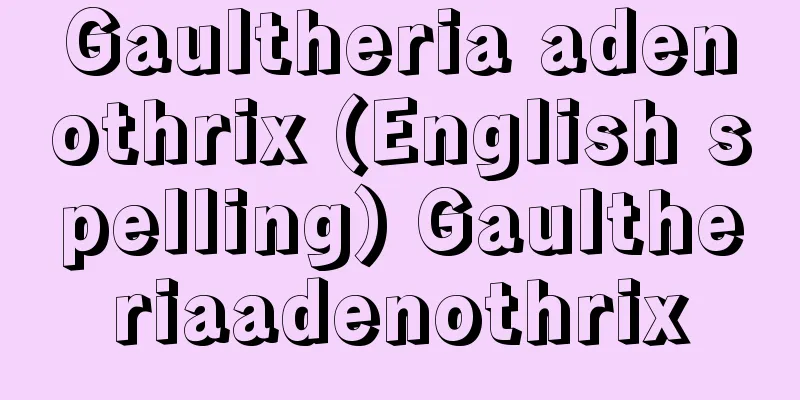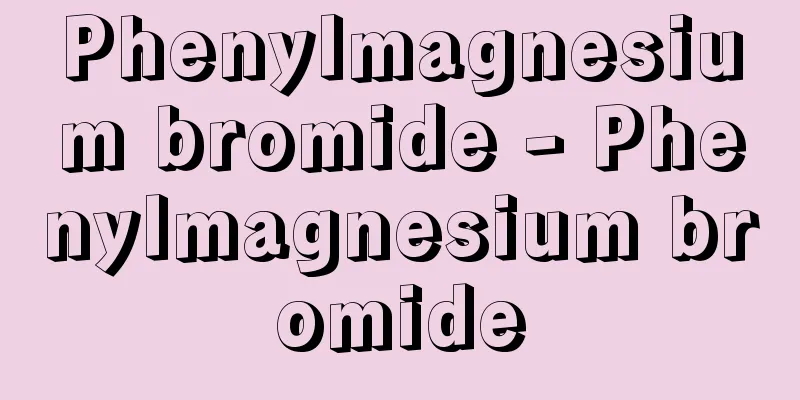Goethe - Johann Wolfgang von Goethe

|
A world-renowned German author. Environment and qualityHe was born on August 28th into a wealthy family in Frankfurt am Main. His father was a serious doctor of law who lived a private life. His mother was a bright woman with a rich imagination. Goethe studied law at the University of Leipzig (1765-68) and was familiar with the rococo atmosphere of the area. He learned about the joys and sorrows of love through Köthchen Schönkopf and composed love poems in the style of Anacreon. He showed his talent for creativity early on with his rococo plays The Lover's Temptation (1767) and The Fellow Sinners (1768-69). After a broken heart and falling ill, he returned to his hometown. He was influenced by pietism, especially by its devotee Susanna von Klettenberg. His autobiography was later included in Wilhelm Meister's Apprenticeship as "Confessions of a Beautiful Soul." He studied at the University of Strasbourg, where he obtained the title of Doctor of Law (1770-71). There he discovered Herder and was exposed to Shakespeare, Homer, Pindar, folk songs, and the magnificent beauty of Gothic architecture (Strasbourg Cathedral). Poems such as "Love and Separation" (1770) and "May Song" (1771), which were born out of his love for the girl Friederike Brion from Seesenheim, herald the beginning of modern German lyric poetry. Around 1772, when he began his law training at the Imperial Court of Judiciary in Wetzlar, the so-called Sturm und Drang literature was at its height. He gained the friendship of Merck, Laverty, F. H. Jacobi and others, and produced important poems such as "The Tempest-Lynn of the Wanderer" (1772), "Ganymede" (c. 1774), and "Prometheus" (1773). Goethe's play Götz von Berlichingen (1773) and novel The Sorrows of Young Werther (1774) made him famous. The latter is a classic example of a love story, depicting the joys and sorrows of his love for Charlotte Buch. He was engaged to Lily Schönemann, but the engagement was soon broken off (1775). He also explored the problems of passionate love in his plays Cravigo (1774) and Stella (1775). He began writing Faust around 1775. The manuscript was lost for a long time, but was discovered in 1887 and published as Faust in the First Manuscript. [Hiroshi Oguri] Weimar eraIn 1775, Goethe was invited by Duke Karl August to enter the court of Weimar. The Duke's educational considerations made Goethe realize the need for him to maintain self-restraint and cultivate self-discipline. In this regard, his beloved Madame Charlotte von Stein, an older woman, had a great influence on him. He began to train in classical views of art and life. He wrote the poems "Ilmenau," "To the Moon," "Divinity," and "The Limits of Humanity," as well as the play "Iphigenie" (first prose draft, 1779). Around this time, he began to study natural sciences, and in osteology he discovered that humans also have an intermaxillary bone (1784). In 1779, he became a Privy Councilor, and gradually became overwhelmed with government affairs. To escape from the hassle and his long relationship with Madame Stein, he went to Italy, where he tried to reinvent himself as an artist in the land of the classics (1786-88). He also deepened his observations of nature, and came to understand the concept of "proto-plants." He completed Iphigenie (final verse, 1787), Egmont (1788), and Torquato Tasso (1790). Returning from Italy, Goethe fell in love with Christiane Burpius, and after 17 years of common-law marriage, they officially married in 1806. His experiences with Rome and Christiane led to the writing of Roman Elegies (1790). He had five children with Christiane, but only his eldest son, August, survived. After returning to the country, he retired from government affairs and his main official duties were the administration of the University of Jena and the supervision of the court theater. In 1792, he accompanied Duke Augustus, who joined the anti-French revolutionary army. These were later compiled into Diary of a Visit to France and The Siege of Mainz (1822). His experiences in Italy were published as An Italian Voyage (1816-17). From 1788 onwards, he studied natural sciences enthusiastically, and wrote The Metamorphoses of Plants (1790) and Contributions to Optics (1791-92). His friendship with Schiller led to a resumption of poetic creativity. The decade from 1794 to 1805, during which the two men were close friends, was Goethe's most active period of creative activity, and also the heyday of German classicism. Together with Schiller, he challenged the literary world of the time with satirical poetry, and wrote many ballads. He completed Wilhelm Meister's Apprenticeship (1795-96), a revised version of Wilhelm Meister's Dramatic Mission, written between 1777 and 1785 (a lost copy of the draft was discovered in 1910 and became known as Meister's First Draft). This is considered a masterpiece of German literary novels. His other works, which follow the ancient form but depict the modern era shaken by the French Revolution, are the epic poem Hermann and Dorothea (1797) and the play The Illegitimate Daughter (1803). The epic poem The Fox (1794) satirizes modern ways in the form of an animal fable. Faust is revisited, the first part of which was published in 1808. [Hiroshi Oguri] Goethe in his later yearsIn 1805, Schiller died. In 1806, Napoleon's army entered Germany, and the Holy Roman Empire was destroyed. In 1808, Goethe met Napoleon. Because he recognized Napoleon's greatness, he was unable to actively participate in the war of liberation for his native Germany. He wrote the novel "Ein der Welt" (1809), which deals with the conflict between passion and ethics in marriage. In 1810, "Theory of Colors" was published, and he continued writing his autobiography "Poetry and Truth" (parts 1 to 3 were published from 1811 to 1814, and part 4 was published posthumously in 1833). This is a masterpiece of autobiographical literature, and an important record for understanding the cultural situation in 18th century Germany. During a trip to his hometown of the Rhine and Main in 1814 and 1815, he met Marianne Willemer, and his love affair with her and the influence of the Persian poet Hafiz led to the creation of "Poems from the West and the East" (1819). In 1816, his wife Christiane died. From 1823, Eckermann became Goethe's collaborator. He compiled Goethe's wisdom from his later years in "Dialogues with Goethe" (1836-48), which contributed greatly to the understanding of Goethe in later generations. In 1822, he fell in love with an 18-year-old girl, Ulrike von Rebetzow, at Marienbad, and this tragic experience led to the creation of "Elegies at Marienbad" (1823). "Wilhelm Meister's Wandering Years" was completed in 1821 and published in 1829 after some corrections. It calls for individuals to acquire special skills in order to serve society. It promotes the virtue of resignation rather than the full development of the individual. Just before his death, the second part of "Faust" was completed (completed in 1831, published in 1832). On March 22, 1832, Goethe ended his colorful life of 83 years at his home in Weimar. [Hiroshi Oguri] Lifelong Challenge: Self-DevelopmentAll his works are "fragments of a great confession." His thoughts extend not only to literature but also to all fields such as natural science and philosophy, but the biggest challenge in his life was how to fully develop his own individuality. The desire to "build the pyramid of my existence as high as possible" guided his life. In his youth, his individuality manifested itself as a strong self-assertion, but as he grew older, it deepened into a harmonious view of life. It is certain that Goethe, who held a responsible political position at the court of the small country of Weimar, did not like revolution or war and leaned toward conservatism. It was not wrong for Engels to say, "Goethe is sometimes a rebellious, mocking genius who despises the world, but sometimes a cautious, quiet, narrow-minded snob." However, in the reality of a backward Germany, it is admirable that he was able to look at the world so broadly and quickly sense the problems of the coming industrial society. For Goethe, all academic and artistic endeavors are connected to how we should live. Being thrown into the infinite universe makes us keenly aware of our own powerlessness. But that does not make us despair. He believed that finite humans can live in harmony with nature. His fundamental attitude was that "the most beautiful happiness of a contemplative human being is to fully explore what can be explored and to quietly respect what cannot be explored." Although he knew all about the dark side of life in his long life of over 80 years, he never fell into pessimism. His masterpiece, "Faust," positively depicts a powerless human making repeated mistakes while striving for a better world. His ultimate belief was that "to live is good." [Hiroshi Oguri] Trends in Goethe StudiesToday's Goethe studies are strongly critical of the 19th and early 20th century tendencies to idealize Goethe (Hermann Grimm) or mythologize him (Gundolf). They point out that Weimar classicism, centered on Goethe and Schiller, was distorted and exploited by the political ideologies of each era, and there is a notable trend to take a reception history or social history approach, seeking to return Goethe to his original form. In order to contribute to general culture by promoting Goethe studies and elevating the spirit of Goethe, the Goethe Prize was established in his hometown of Frankfurt am Main (where Goethe's birthplace remains), and since 1927 it has been awarded to George, Schweitzer, Freud, Carossa, Planck, Hesse, Thomas Mann, and others. Furthermore, with the cooperation of Goethe researchers, the Goethe Society was established in Weimar in 1885 and has become the center of Goethe studies worldwide. The research journal Goethe Yearbook has been published since 1880 and has continued to the present day, changing its name and form. In Japan, there is the Japan Goethe Society and the Kansai Goethe Society, each of which publishes a yearbook. [Hiroshi Oguri] Impact on JapanGoethe's name first became known in Japan in the early Meiji period, but the country's full-scale acceptance of Goethe began with Mori Ogai's translation of Goethe's poetry, particularly Faust, in 1911. Among the full-scale studies on Goethe, Kimura Kinji's Young Goethe Studies (published in 1934) is outstanding, but the tendency to idolize Goethe found there has been criticized from the standpoint of an internal interpretation of the work and from the perspective of social history, and a reconsideration of Goethe's image is underway. [Hiroshi Oguri] "The Complete Works of Goethe, edited by Nobori Masami et al., 15 volumes and 1 supplementary volume (1979-92, Ushio Publishing)" ▽ "The Complete Works of Goethe, 12 volumes (1960-61, Jinbun Shoin)" ▽ "The Life of Goethe, by Heinemann, translated by Ohno Shunichi, 3 volumes (Iwanami Bunko)" ▽ "Goethe the Man, by Oguri Hiroshi (Iwanami Shinsho)" ▽ "Conversations with Goethe, by Eckermann, translated by Yamashita Hajime, 3 volumes (Iwanami Bunko)" [References] | | | | | | The Sorrows [Chronology] |A statue of the world-famous author Goethe. Located on the south side of Burggarten. Vienna, Austria ©Shogakukan "> Goethe Statue Goethe's birthplace remains in his hometown of Frankfurt am Main. The 17th century building was destroyed in the Second World War, but was faithfully restored after the war. Frankfurt am Main, Germany ©Shu Okada "> Goethe House Source: Shogakukan Encyclopedia Nipponica About Encyclopedia Nipponica Information | Legend |
|
ドイツの世界的作家。 環境と素質8月28日、フランクフルト・アム・マインの富裕な家に生まれる。父はきまじめな法学のドクトルで、生涯一私人として暮らした。母は想像力に富む明るい女性。ゲーテはライプツィヒ大学で法律を学び(1765~68)、その地のロココ的風潮に親しみ、ケートヒェン・シェーンコップにより恋の喜びと悩みを知り、アナクレオン風の恋愛詩をつくった。ロココ風の戯曲『恋人のむら気』(1767)、『同罪者』(1768~69)によって早くも創作の才を示す。恋に破れ病を得て故郷に帰る。敬虔(けいけん)主義、とくにその信奉者ズザンナ・フォン・クレッテンベルク嬢の影響を受ける。この人の自伝はのちに『ウィルヘルム・マイスターの修業時代』に「美しき魂の告白」として収められる。シュトラスブルク(ストラスブール)の大学に学び、法学得業士の称号を得る(1770~71)。その地でヘルダーを知り、シェークスピア、ホメロス、ピンダロス、民謡、ゴシック建築の壮大な美(シュトラスブルク大聖堂)などに触れることができた。ゼーゼンハイムの少女フリデリーケ・ブリオンへの愛によって生まれた『愛と別れ』(1770)、『五月の歌』(1771)などの詩は近代ドイツ叙情詩の開始を告げるものである。ウェツラーの帝国大審院で法律の実習についた1772年ころが、いわゆるシュトゥルム・ウント・ドラング(疾風怒濤(しっぷうどとう))文学のもっとも高揚した時期である。メルク、ラバーター、F・H・ヤコービらの友情を得、『さすらい人の嵐(あらし)の歌』(1772)、『ガニュメデス』(1774ころ)、『プロメテウス』(1773)などの重要な詩がつくられる。 戯曲『鉄手のゲッツ・フォン・ベルリヒンゲン』(1773)、小説『若きウェルテルの悩み』(1774)はゲーテの名を一躍有名にする。後者はシャルロッテ・ブフへの愛の喜びと苦しみに発するもので、恋愛小説の一典型とされる。リリー・シェーネマンと婚約するが、まもなく解消(1775)。戯曲『クラビーゴ』(1774)、『シュテラ』(1775)でも愛の情熱の問題性が追究される。『ファウスト』が1775年ころ書き始められる。この草稿は長く失われていたが、1887年に発見され、『初稿ファウスト』として刊行された。 [小栗 浩] ワイマール時代1775年、ゲーテはカール・アウグスト公に招かれてワイマールの宮廷に入る。公への教育的配慮は、ゲーテ自身にも節度を守り克己心を養う必要を感じさせる。その点で、彼が愛した年上のシャルロッテ・フォン・シュタイン夫人は彼に大きな感化を与えた。古典主義の芸術観と人生観への修練が始まる。詩『イルメナウ』『月に寄す』『神性』『人間性の限界』、戯曲『イフィゲーニエ』(散文による初稿、1779)が書かれる。このころ自然科学の研究を始め、骨学では人間にも顎間骨(がくかんこつ)のあることを発見する(1784)。79年枢密顧問官となり、しだいに政務に追われる。その煩労とシュタイン夫人との久しい関係から逃れるためイタリアに出かけ、古典の地で芸術家としての再生に心がける(1786~88)。自然観察も深められ、「原植物」の理念が得られる。『イフィゲーニエ』(韻文による決定稿、1787)、『エグモント』(1788)、『トルクバート・タッソー』(1790)が完成する。 イタリアから帰ったゲーテはクリスティアーネ・ブルピウスを愛し、17年の内縁関係ののち1806年正規の結婚生活に入る。ローマとクリスティアーネの体験により『ローマのエレギー』(1790)が書かれる。クリスティアーネとの間に5人の子が生まれたが、長男のアウグストだけが生き残る。帰国後は政務を退き、イエナ大学の運営と宮廷劇場の監督をおもな公務とする。1792年、反フランス革命軍に加わったアウグスト公について従軍する。それはのちに『滞仏陣中記』と『マインツの攻囲』にまとめられる(1822)。イタリアでの体験は『イタリア紀行』(1816~17)として世に出る。1788年以降、自然科学の研究が熱心になされ、『植物の変態』(1790)、『光学への寄与』(1791~92)が書かれる。シラーとの交友によって詩的創造がふたたび始まる。両者が親しく交わった1794~1805年の10年間がゲーテの創作活動のもっとも活発な時期で、それはドイツ古典主義の最盛期でもある。彼はシラーとともに風刺詩をもって当時の文壇に挑戦し、多くの譚詩(たんし)を書いた。1777~85年に書かれて中断されていた『ウィルヘルム・マイスターの演劇的使命』(失われていたこの草稿の写しが1910年に発見され、『初稿マイスター』として知られるようになった)を改作して『ウィルヘルム・マイスターの修業時代』(1795~96)として完成する。これはドイツ教養小説の代表作とされる。古代の形式に倣いながらフランス革命に揺れ動く現代を描いたものとして叙事詩『ヘルマンとドロテーア』(1797)、戯曲『庶出の娘』(1803)がある。叙事詩『ライネケ狐(ぎつね)』(1794)は動物寓話(ぐうわ)の形を借りて現代の風俗を風刺したものである。『ファウスト』がふたたび取り上げられ、その第1部が1808年に出版される。 [小栗 浩] 晩年のゲーテ1805年シラーが死ぬ。06年ナポレオン軍がドイツに入り、神聖ローマ帝国は滅亡する。08年ゲーテはナポレオンと会見する。彼はナポレオンの偉大さを認めたから、祖国ドイツの解放戦争に積極的に参加することができない。結婚における情熱と倫理の葛藤(かっとう)を主題とする小説『親和力』(1809)が書かれる。10年『色彩論』が出、自伝『詩と真実』が書き進められる(第1~第3部は1811~14、第4部は死後1833出版)。これは自伝文学の傑作であり、18世紀ドイツの文化的状況を知るうえでも重要な記録である。14~15年に故郷のラインとマインの地方に旅したとき、マリアンネ・ウィレマーを知り、彼女との愛の交渉と、ペルシア詩人ハーフィズの影響とにより、『西東(せいとう)詩集』(1819)が生まれた。16年に妻クリスティアーネが死ぬ。23年からエッカーマンがゲーテの協力者となる。彼は晩年のゲーテの知恵を『ゲーテとの対話』(1836~48)にまとめた。これは後世のゲーテ理解に資すること甚大であった。22年マリーエンバートで18歳の少女ウルリーケ・フォン・レベッツォーを愛し、その悲劇的体験によって『マリーエンバートのエレギー』(1823)が生まれる。『ウィルヘルム・マイスターの遍歴時代』が21年に脱稿し、補正のうえ29年に刊行される。そこでは、個人が社会に奉仕するために特殊な職能を身につけることが求められる。個の全面的展開ではなく、諦念(ていねん)の徳目が進められる。死の直前に『ファウスト』第2部が完成する(1831完成、1832刊)。32年3月22日、ゲーテはワイマールの自邸で83年の多彩な生涯を終えた。 [小栗 浩] 生涯の課題――自己形成彼の作品はすべて「大きな告白の断片」である。その思索は文学だけでなく、自然科学、哲学などのあらゆる分野に及ぶが、いかにして己の個性を十全に展開させるかがその生涯の最大の課題であった。「わが存在のピラミッドをあとう限り高く築き上げよう」という願いが彼の一生を導く。その個性は、青年期には強烈な自己主張として現れるが、年とともに調和的な人生観に深まってゆく。小国ワイマールの宮廷で政治の責任ある地位にあった彼が、革命や戦乱を好まず、保守に傾いていたのは確かである。エンゲルスが、「ゲーテは時には反抗的な、嘲弄(ちょうろう)的な、世界を軽蔑(けいべつ)する天才だが、時には用心深い、おとなしい、了見の狭い俗物だ」といったのは間違いではない。しかし立ち後れたドイツの現実において、あれほど広く世界を見渡し、きたるべき産業社会の問題性をもいち早く察知していたのは偉とすべきである。 ゲーテにとってすべての学問も芸術の営みもいかに生きるべきかにつながる。人間は無限な宇宙のなかに投げ出されて自己の無力を痛感させられる。しかしそれは人間を絶望させはしない。有限な人間が大自然と調和的に生きうることを彼は信じていた。「思索する人間のもっとも美しい幸福は、探究しうるものを探究し尽くし、探究しえないものを静かに敬うことだ」というのが彼の根本態度である。80年を超える長い生涯で人生の暗い面を知り尽くした彼ではあるが、ペシミズムに陥ることはなかった。無力な人間が過ちを繰り返しながらもよりよい世界に向かって努力するさまを肯定的に描いたのが彼の代表作『ファウスト』である。「生きること、それはよいことだ」というのが彼の究極の信条である。 [小栗 浩] ゲーテ研究の動向今日のゲーテ研究では、19~20世紀初頭の、ゲーテを理想化し(ヘルマン・グリム)、あるいはゲーテを神話化する(グンドルフ)傾向に対して強く批判的であり、ゲーテやシラーを中心とするワイマール古典主義が各時代の政治的イデオロギーによって歪曲(わいきょく)され利用されていたことを指摘し、これを本来の姿に戻そうという、受容史的あるいは社会史的方法が著しくみられる。 ゲーテ研究を推し進め、またその精神を顕揚することによって一般文化に貢献するために、故郷フランクフルト・アム・マイン(ゲーテの生家が残されている)でゲーテ賞が設けられ、1927年以降、ゲオルゲ、シュバイツァー、フロイト、カロッサ、プランク、ヘッセ、トーマス・マンらに贈られている。またゲーテ研究者の協力によって、1885年ワイマールにゲーテ協会が設立され、世界のゲーテ研究の中心となっている。研究誌『ゲーテ年鑑』は1880年以降刊行され、名前と形を変えながら現代に及んでいる。わが国でも日本ゲーテ協会と関西ゲーテ協会があり、それぞれ年鑑を発行している。 [小栗 浩] 日本への影響ゲーテの名が初めて日本に知られたのは明治初年であるが、本格的なゲーテ受容は森鴎外(おうがい)によるゲーテの詩、とくに『ファウスト』の翻訳(1911)に始まる。ゲーテの本格的研究書のなかでは木村謹治の『若きゲーテ研究』(1934刊)が出色であるが、そこにみられるゲーテを偶像視する傾向は、一つは作品の内在的解釈の立場から、一つは社会史的な視点から批判され、ゲーテ像の見直しが進められている。 [小栗 浩] 『登張正実他編『ゲーテ全集』15巻・別巻1(1979~92・潮出版社)』▽『『ゲーテ全集』全12巻(1960~61・人文書院)』▽『ハイネマン著、大野俊一訳『ゲーテ伝』全3冊(岩波文庫)』▽『小栗浩著『人間ゲーテ』(岩波新書)』▽『エッカーマン著、山下肇訳『ゲーテとの対話』全3冊(岩波文庫)』 [参照項目] | | | | | | [年表] |世界的作家ゲーテの像。ブルク公園の南側にある。オーストリア ウィーン©Shogakukan"> ゲーテ像 ゲーテの故郷フランクフルト・アム・マインに残されている生家。17世紀の建物は第二次世界大戦の戦火で破壊されたが、戦後、忠実に復原された。ドイツ フランクフルト・アム・マイン©Shu Okada"> ゲーテの家 出典 小学館 日本大百科全書(ニッポニカ)日本大百科全書(ニッポニカ)について 情報 | 凡例 |
<<: Battle of Gettysburg - Gettysburg Battle
Recommend
Eimeitai - Eimeitai
…Despite this family background, he distinguished...
seven deadly sins
In Buddhism, sin is an act that goes against the ...
Contratenor bassus (English spelling)
...Male alto singer. In the mid-15th century, the...
Military service
Also called "guneki." Military obligati...
Bowie knife
...Kawajiri in Kumamoto Prefecture is said to be ...
Goclenius, R. (English spelling) GocleniusR
…The term goes back to the Latin ontologia, or ph...
《Mask》
…After leaving England in 1904, he had little act...
Flight ship - Flight ship (English spelling) fluit
A new type of ship that was actively built in the ...
Fisheries science - Suisanguku (English spelling) fisheries science
It is an applied science that studies the theory ...
Urea - Urea
A compound equivalent to the diamide of carbonic ...
The Mystery of the Birth of a Woman - Ubume no Kai
...What is noteworthy about this form, which is h...
Campos (English spelling)
A city in the northeast of Rio de Janeiro State, s...
Red pine - Red festival
...The flowers grow in spikes, but the rachis is ...
Airship - hikousen (English spelling) airship
A type of lighter-than-air aircraft (LTA) that us...
Vorfrage
…It can be seen that among the prerequisite relat...









